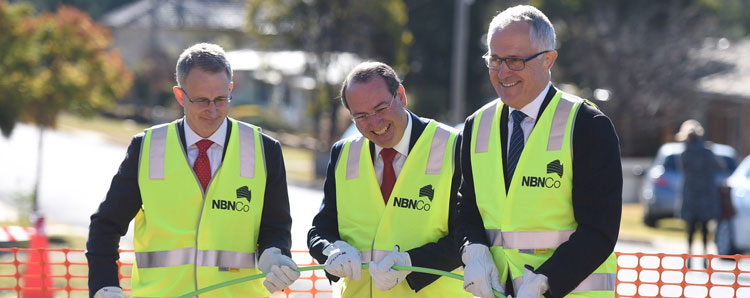NBN
NBN (or National Broadband Network) is an Australian Government initiative to improve Australia’s broadband infrastructure by using (where possible) fibre optic cable (simply referred to as “Fibre”).
This technology is currently being rolled out across Australia and comes in a number of different connection types. These include:
- Fibre to the Premise (FTTP)
This involves running fibre directly from the node (the mini exchange point for your area) to the end users home or business. This is the most optimal method of connection offering the best internet speeds.* - Fibre to the Node (FTTD)
This involves running fibre to a Telstra Node (the mini exchange points) in your neighbourhood and then relying on the existing copper wire used currently for telephones and broadband to deliver services back to your premise. - Fibre to the basement
This involves running fibre to a nearby box or apartment block and using the existing copper wire used for telephones and broadband to deliver services back to your premises. - HFC Cable
This involves using existing cable networks which are currently delivering Pay TV services. - Fixed Wireless Technology
This is the opposite of mobile wireless since it connects to a specific location. This is system is basically a large scale wireless network. - Satellite Technology
Similar to fixed wireless – this system relies on delivering internet and phone services via satellite.
*Internet speeds will be dependent on distance from the node, distance from exchange and network saturation due to the population density of your area.
The Current NBN Plan

Federal Minister for Communications Malcolm Turnbull (right) lends a hand rolling out NBN fibre at Queanbeyan, near Canberra, in June 3. AAP Image/Lukas Coch
Changes in government have meant that in your area you could have any one of the NBN options above installed or being installed. The current Government are pursuing the installation of Fibre to the Node technology. This involves running fibre to a Telstra Node (the mini exchange points) in your neighbourhood and then relying on the existing copper wire used currently for telephones and broadband to deliver services back to your premise. Whilst fibre to the premise is widely considered to be the best installation option – opinions are split on the pros and cons of all systems – however it is widely believed that any reliance on the old copper network is going to be a handicap to the system.
Fibre to the node was also billed as “Fast. Affordable. Sooner”, however reports suggest that this system will not be able to offer the bandwidth, cost savings or roll out speed over fibre to the premise plans. [Source: Rod Tucker, Laureate Emeritus Professor, University of Melbourne This article was originally published on The Conversation. Read the whole article]
Internet Speeds have become a hot election topic and any change in government could bring a revision to the NBN plan. Looking at the positives replacing any part of the ageing copper network with new technology is welcomed and wide spread fibre to the node updates can obviously pave the way for fibre to the premise upgrades down the track.
How can CCBT help with NBN?
Did you know
Many businesses are being mislead into believing that NBN installation means you need to change ALL your equipment. This simply isn’t true. The NBN will offer the end user a different type of telephone line to connect to their business only. It will NOT impact your internal cabling at all.
In today’s market place there is a lot of miscommunication circulated to confuse the public and business alike. At CCBT we’re watching the Rockhampton NBN roll out carefully. We want to ensure that what ever type of connection is installed in your area we have the experience, advice and solutions to help you get the most out of your connection. Contact us today for more information.

